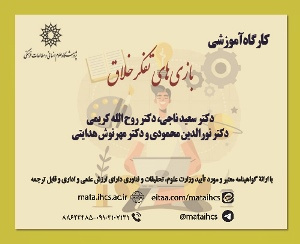شناسایی مؤلفه های سواد صلح معلمان متوسطه دوره اول (مقاله علمی وزارت علوم)
درجه علمی: نشریه علمی (وزارت علوم)
آرشیو
چکیده
هدف از پژوهش حاضر شناسایی مؤلفه های سواد صلح معلمان متوسطه دوره اول بود. رویکرد حاکم بر این پژوهش کیفی بود که برای پاسخ به سؤالات پژوهش و متناسب با ماهیت موضوع پژوهش از میان روش های گوناگون کیفی، روش های توصیفی تحلیلی و نظریه داده بنیاد انتخاب شد. ابزار گردآوری داده ها اسناد، منابع مکتوب و مصاحبه های نیمه ساختاریافته بود. شرکت کنندگان در پژوهش استادان دانشگاه، فعالان حوزه آموزش صلح و نیز معلمان متوسطه دوره اول شهر تهران بودند. پژوهشگر با انجام 1۵ مصاحبه به اشباع نظری رسید. تجزیه وتحلیل داده های کیفی در نسخه کلاسیک نظریه داده بنیاد با استفاده از کدگذاری و در سه مرحله کدگذاری باز، محوری یا نظری و کدگذاری انتخابی انجام شد. پس از تجزیه وتحلیل داده ها 97 کد باز و 28 کد محوری شناسایی شد که در 7 مقوله کلی طبقه بندی شد. بر اساس نتایج این پژوهش مهم ترین مؤلفه های سواد صلح عبارت اند از: نیازهای جدید، شناسایی ظرفیت ها و مهارت های اساسی صلح، درک دقیق معنای انسانیت، درک دقیق شرایط اجتماعی، ویژگی های معلمان دارای سواد صلح، عناصر سه گانه سطوح فردی، اجتماعی، جهانی و هنر زیستن. بر این اساس، سواد صلح عبارت است از روش جدیدی در برقراری و گسترش صلح که بر اهمیت نیازهای غیرجسمانی تأکید می کند.Identifying the components of peace literacy of the junior high school teachers
The aim of this research was to identify the components of peace literacy of the junior high school teachers. The research approach was qualitative; and the descriptive-analytical as well as grounded theory methods were chosen to answer the research questions. Data collection tools included document, written sources and semi-structured interviews. The research participants were university professors, activists in the area of peace education, as well as the junior high school teachers in Tehran. The researcher achieved the theoretical saturation through conducting 15 interviews. Qualitative data analysis was done based on the classic version of the grounded theory using three stages of coding including open, axial or theoretical as well as selective coding. After analyzing the data, 97 open codes and 28 axial codes were identified which were classified into 7 general categories. According to the results of this research, the most important components of peace literacy include: New needs, identification of basic peace capacities and skills, accurate understanding of the meaning of humanity, accurate understanding of social conditions, characteristics of teachers with peace literacy, triple elements of individual, social, and global levels and the art of living. Accordingly, peace literacy is a new way of creating and developing peace that emphasizes the non-physical needs.





